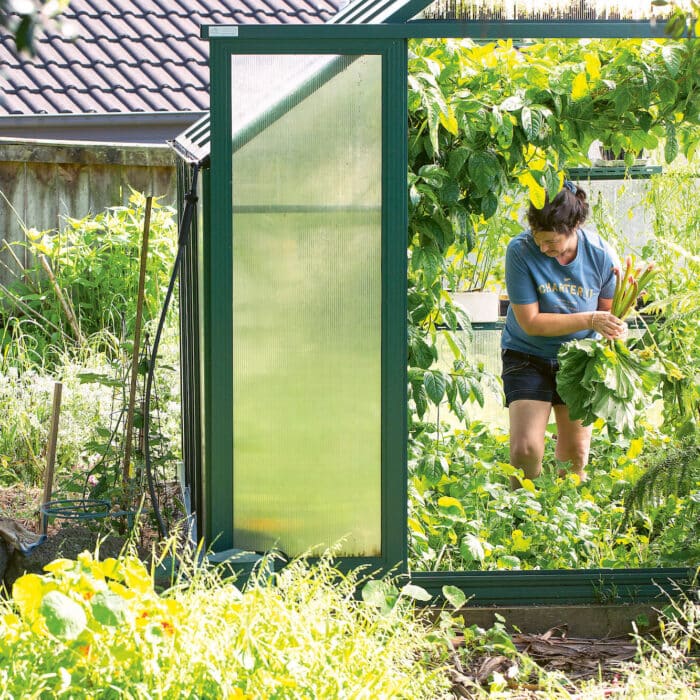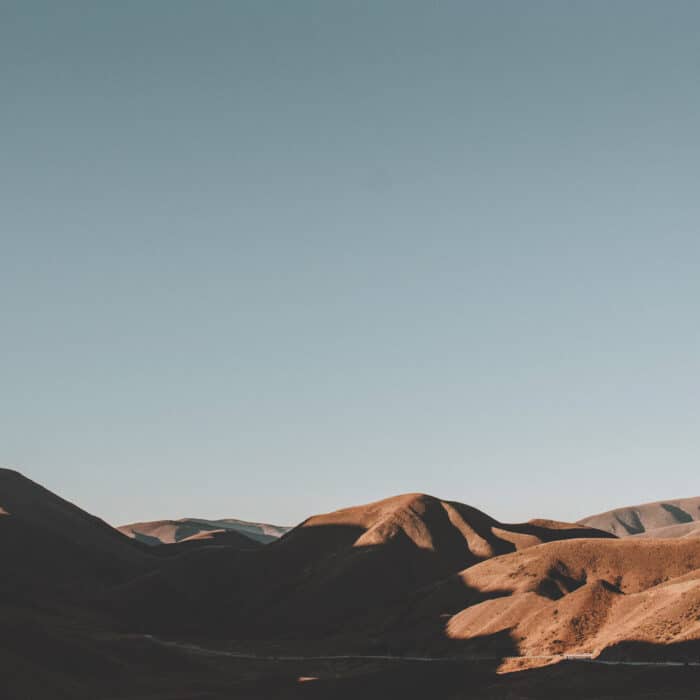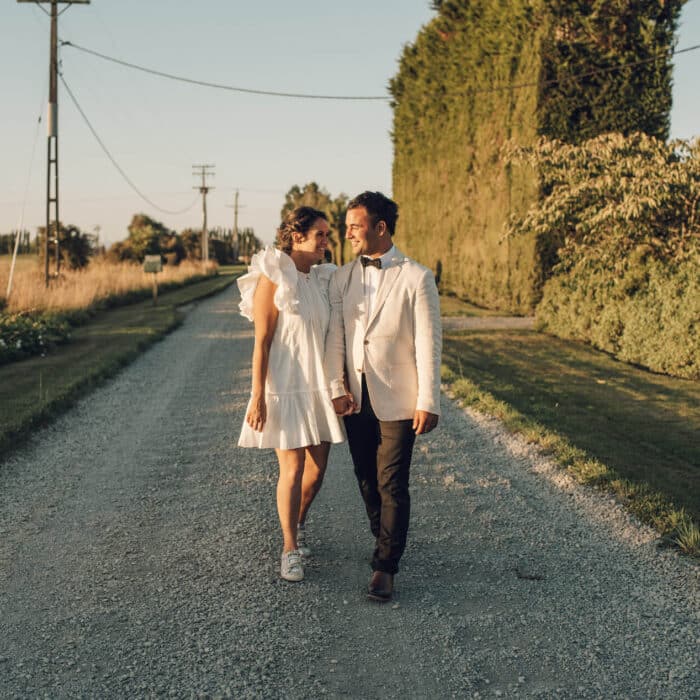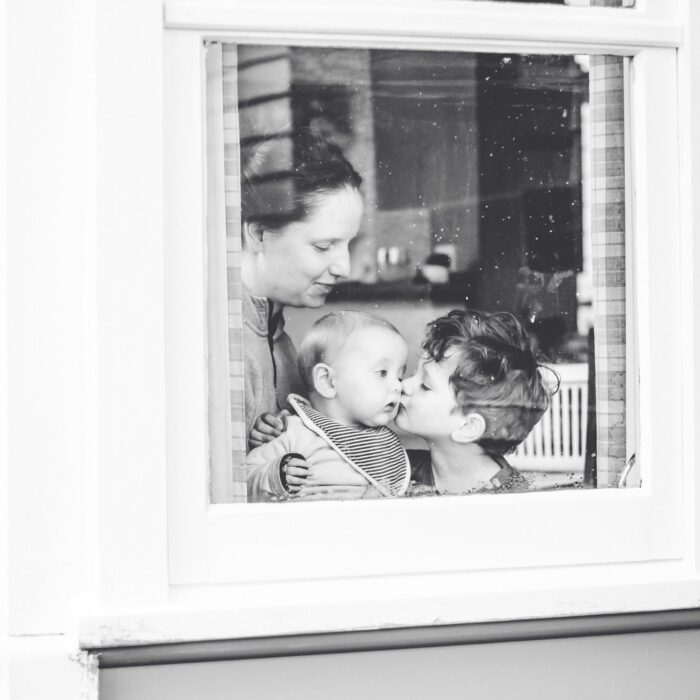04 July 2021
The Edge of The World
Wahine Ahuwhenua. Women of The Land.
Writer: Carly Thomas
Photographer: Ava Thomas
Rēkohu – also known as the Chatham Islands – is the place Shannon Ataera calls home. There is drama and severity to this archipelago 800 kilometres east of the South Island, and living here takes fortitude – something Shannon has in spades. This matriarch, mother and indigenous wahine of Moriori, Māori and Cook Island Asian descent is just one of the many women who are so important to this isolated community, where kaimoana and the smell of the sea are an intrinsic part of daily life.

Rēkohu is hard-edged. A remote land of wind-bent trees. Sheer cliffs reach to the sky and fall to the sea. Its name - given by the Moriori and meaning misty sun - is apt: the skies here are often shot through with clouds. Shannon Ataera surveys the floor of the crayfishing operation. It's late morning at Port Nicholson Fisheries in Owenga, a small settlement on the southeastern side of the island, and Shannon and her small team of wāhine have been working since before the sun came up. "When it's on, it's all on here and we work long hours," she says, a bright smile flashing across her face. "We have fun too and we look after each other. We are strong wāhine here."
The tide is out in the bay at the back of the depot, and a rogue cattle beast wanders past. With her clipboard in hand, Shannon walks among the crew, letting them know they are doing an "awesome job". Three young women move in sync, grading the shiny, jostling crayfish by size and quality, skilfully avoiding being pinched or flicked with a tail. The crayfish are packed up, alive but sedated, in preparation for the export market. "The fisheries on Rēkohu provide sixty per cent of Moriori and Ngāti Mutunga income," Shannon explains. "It's so vital to the community and it's a big part of who we are. Here I feel like I can make a difference and help empower our young leaders on the island. They are our future."
Just over 600 people live on Rēkohu, spread out over a fifty kilometre radius and connected by dusty roads and community ties. Some come for a visit and stay for a lifetime, and others, like Shannon, are from here. Her ancestors were amongst the first to live on Rēkohu, navigating their star-led way from Eastern Polynesia around 900 years ago. The Moriori - who have a different ancestral lineage to Māori - had no contact with other people for over half a century and they cultivated a strong and vibrant culture built on a covenant of peacefulness. Their footprint was forever changed in the late 1700s when European sealers and whalers arrived, bringing deadly diseases, and then in 1835, Ngāti Mutunga and Ngāti Tama invaded the island and enacted one of the deadliest wars in New Zealand history. Today, many Moriori are educating others about their history and their culture, working to restore what has been taken. All of this is woven and threaded into Shannon's whakapapa, anchoring her to the land and the sea that surrounds her. "When I was growing up, to be Moriori was a thing of shame. But we have always known who we were, and I want my kids to know too," Shannon says. "For many years I took for granted the bounty that I had around me on the island, until I lived in Australia for eight years where there was only frozen seafood on offer. When I came home, I had a deeper appreciation for what we have here."
Shannon's connections to Rēkohu run deep and its tides have been a constant part of her life. She feels her ancestors walking with her. On Rēkohu, she says, the past is part of every day. A tā moko on her skin depicts the rākau momori - ancient Moriori carvings that reside on a small handful of endemic kōpi trees on the island. Shannon carries her whakapapa with her and says there is no better feeling than knowing where you are from. She was born on the island and brought up in Te One, a settlement located on the western coast, beside Petre Bay. Her father was a fisherman and from the age of eleven she spent a lot of time on the deck of his old steel boat. "My brother and I would go out for two or three weeks at a time," she says. "I loved it. You didn't have to brush your hair or anything. I never really knew my father until I went and worked for him, so that was quite special."
Fishing and kaimoana have always been a huge part of the island's identity. Cold and warm ocean currents combine around Rēkohu, creating nutrient rich waters and a healthy ecosystem. Shannon manages the Chatham Islands division of Port Nicholson Fisheries - the largest Māori-owned exporter of live crayfish in the world - and the freshly caught crayfish that the women are carefully weighing will be exported to China. It's hard physical work and at the peak of the season, it's relentless. When it comes to choosing her staff, Shannon hand picks each one, relying on her intuition guide her. "It's empowerment of the women around here," she says proudly. "I just think we are often underrated and undervalued. We carry multiple roles in society, and we wear multiple hats. I don't think that is nurtured enough, so I'm all about that."

Around her neck, close to her heart, Shannon wears a whale's tooth. From a female sperm whale, it is bound and hung with harakeke and polished from years of being worn against her skin. Her taonga came from Te Whanga, a long, shallow coastal lagoon created by the sandspit that links the higher northern and southern parts of Rēkohu. It is a place she has always loved going to. "I was meant to be out rounding up whitebait, but because it was so glassy, I went swimming instead and I found this." She places her hand on the tooth. "It was calling me. The old people tell you that these taonga find you and that it means it's your time to find your way out to the front."
Shannon has mana in bucketloads, with strength and softness in equal measure. She also holds the quality that is so pronounced in Rēkohu residents: a resilient streak that comes from living on the edge of the world. Those who make their life here are at the mercy of the weather. If it packs in, the plane and the boats don't come - and neither do their supplies. There is no mobile phone coverage, no supermarket and if something breaks people tend to fix it themselves. On Rēkohu, community becomes family and helping each other out can sometimes be about survival. "It's just what we do here, without question and without hesitation. It's who we are," says Shannon. "This place is home. The community, the village, actually raises you down here. There's always a safety net and everyone helps each other." Two years before she moved back from Australia, Shannon received a sign that she needed to return to Rēkohu. "This smell came to me one day and I knew it was to do with home," she recalls. "I assumed it was the rākau momori, the tree carvings, but one morning, I was walking over the bridge and the smell of the river hit me and it was the smell - just like as if I was at home."
Shannon knows she is in the right place now. Here, where the beach is named Hawaiki, the river is named Hawaiki and her son is Hawaiki too, in reverence to these special landmarks and the sacred homeland of her Māori ancestors. She lives behind the fisheries depot in an old house bus with her husband Pete. All of Shannon's three children were born on Rēkohu, an anomaly for the island as nearly all of the local mothers go to the mainland to give birth. Shannon was staunch about not leaving Rēkohu. "I had to fight for it. I was just really fierce and pulled out the Treaty of Waitangi and my indigenous birth rights. They wanted me to go out on an air ambulance, so I had to be Bad Jelly the Witch," Shannon laughs. "As you get older you get stronger with what you say and what you stand up for."
From the sky, Rēkohu is just a drop of land in the Pacific Ocean. There is wildness here, brushed in hues of grey, tussock gold and deep blue. In the little cove near her home, Shannon gathers pipi, kina and pāua, and Pete catches cod and groper. Pete also works at the fisheries - he's the truck driver, the delivery man, the "yes" man and he looks after the factory's water systems. "He keeps it pristine," says Shannon with a proud grin. Reggae music sounds out as Pete's truck pulls up at the depot. The sun peeps through the ever-present clouds and a car rumbles by, the first in at least an hour. An arm waves out, four arms wave back and one little dog barks half-heartedly. The women take a moment to enjoy the sun and Shannon takes it all in, "It's medicine for your soul this place, eh?"
Translations: Rēkohu, the Chatham Islands. Wahine, woman. Wāhine, women. Ngāti, tribe or extended family. Whakapapa, lineage or genealogy. Tā moko, traditional skin engraving. Rākau momori, ancient Moriori carvings. Kaimoana, seafood. Harakeke, leaves of the native flax plant. Taonga, prized object. Mana, an enduring, indestructible spiritual power. Hawaiki, the ancient homeland of Māori prior to their arrival in Aotearoa. Pipi, common edible bivalve shell. Kina, sea urchin. Pāua, edible abalone.
If you enjoyed this story, please share with someone else.
This story appeared in the Takurua Winter 2021 Edition of Shepherdess.
Get your hands on a copy.
Related Stories
Notes from Nonna
In her own garden in Māngere Bridge, Bri nurtures the Italian ingredients she loves, sharing her family’s beloved traditional recipes in her seasonally inspired cookbook.
Adjusting to Alone
Michelle opens up about the feelings surrounding her solo Otago Central Rail Trail cycle trip and the scenery she documented along the way.
An Ongoing Flame
For Winton couple Mikayla and Mitchell Smith, getting married was just another step in an already long and beautiful relationship.



